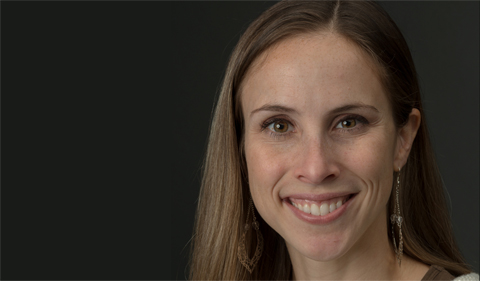Dr. Jana Houser, Assistant Professor of Geography, received NSF funding to examine topographic effects on tornado formation and intensity.
Houser has spent much of her early career using radar data to examine the internal dynamics of tornado formation. Her research on the rapid development and evolution of tornadoes and associated storm-scale features has already made a mark on her field as reflected in an impressive publication record and interest among operational forecasters in her recent findings on tornadogenesis.
Houser and her students more recently embarked on a new trajectory of research that explores the influence of factors in the physical landscape on tornado behavior and this work will now be supported by the National Science Foundation. The preliminary study that motivated the current NSF project has already captured the attention of the broader meteorology community as indicated by her invitation to address the American Meteorological Society’s Radar Meteorology Conference as a keynote speaker this year.
“Up to this point, the role of the physical ground surface below the tornado has been largely uninvestigated. Traditional means of exploring tornado formation, intensification, and decay have concentrated on looking at internal storm processes; very few studies have even considered the role that friction and/or land characteristics might play on tornado intensity and behavior. In fact, many numerical simulations neglect friction altogether. This project will be a pioneering study to quantify statistically the effect that changes in topography and land surface roughness have on tornadoes,” Houser said.
Houser and her students will use high-resolution, rapid-scan radar data to track tornado intensity over time and National Weather Service damage surveys to map tornadogensis and decay locations. The research simultaneously will utilize GIS-based digital elevation maps and the national land cover dataset to quantify topography and ground cover characteristics along the tornado path and at formation and decay locations.
“This research will also support both undergraduate and graduate student participation through a variety of student-centered tasks. Several undergraduate students will be responsible for performing the quality control measures required to make the radar data quantitatively usable and for acquiring damage surveys from the National Weather Service. These processes will allow these students first-hand access to mobile radar and damage survey data, letting them experience the first steps in data acquisition and processing which ultimately kick off the scientific process. Additionally, three graduate students will perform many of the core tasks of analyzing the storms, performing statistical analyses, working with GIS data, and generating many of the results for this study. The work of the students is an integral component of this project and will prepare the students for careers in research-based fields,” Houser said.
By exploring an important gap in current understanding of tornado formation and intensification, Houser said, the findings may contribute to advancing the forecasting of tornado intensity.
“We are hoping that the results of this study open the eyes of the scientific community to the importance that friction and the ground beneath the tornado have on the tornado’s evolution. We are also hoping to uncover trends that operational meteorologists can use in the warning-forecast procedure that will enable more accurate forecasts and warnings to be issued. For example, if we find that tornadogenesis is often favored on the upslope side of a topographic feature, forecasters might be more inclined to issue a warning if a potentially tornadic storm is approaching a region where a hill or small mountain is present,” she added.
Students with an interest in extreme weather can explore this topic further through Dr. Houser’s Storm Chasing Experience program in Oklahoma offered each May through the Office of Global Opportunities.


















Comments